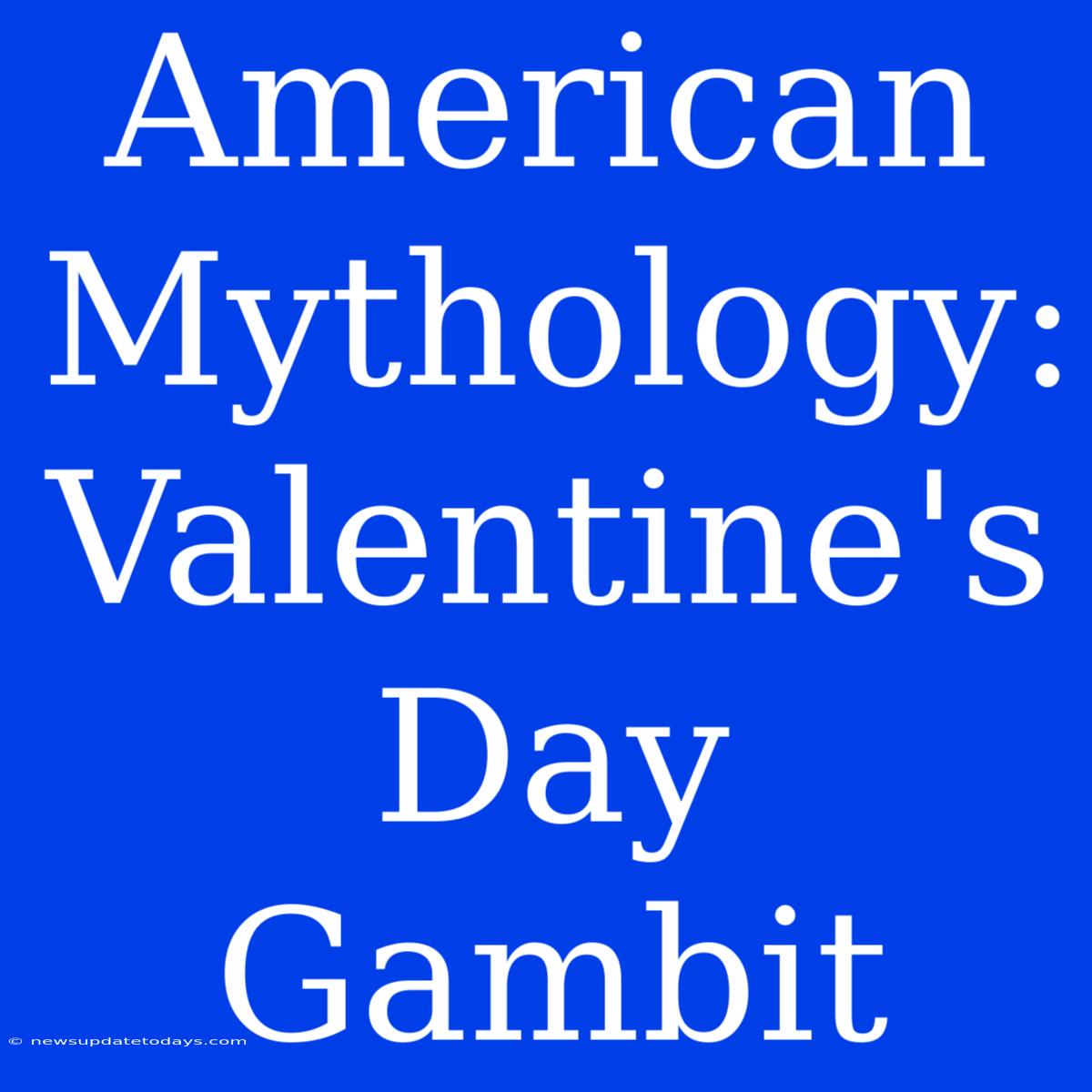American Mythology: Unmasking the Valentine's Day Gambit
Valentine's Day. Roses, chocolates, romantic dinners. But behind the saccharine sweetness lies a surprisingly complex history, a narrative woven with threads of myth, marketing, and evolving social customs – a veritable American mythology of romance. This article delves into the fascinating, often contradictory, story of how Valentine's Day became the commercialized holiday we know today.
The Saint, the Martyr, the Mystery
The origins of Valentine's Day are shrouded in mystery. Several saints named Valentine are recognized by the Catholic Church, each with their own legend. Some narratives portray Valentine as a priest who defied the Roman Emperor Claudius II's ban on marriage for young men, secretly performing weddings for lovers. Others claim he was imprisoned for his Christian faith and sent love letters to his jailer's daughter. The truth, however, remains elusive. This ambiguity itself fuels the mythos; the very uncertainty contributes to Valentine's Day's romantic allure.
From Medieval Courtship to Commercial Celebration
The transition from religious observance to romantic celebration was gradual. During the Middle Ages, the concept of courtly love flourished, and Valentine's Day became associated with expressions of affection, particularly among the aristocracy. The exchange of love letters and tokens gained popularity, fostering a tradition that continues to this day. However, it wasn't until the 18th and 19th centuries that Valentine's Day began its transformation into a mass-market phenomenon.
The Hallmark Effect: Manufacturing Romance
The role of commercialization in shaping modern Valentine's Day cannot be overstated. Companies like Hallmark capitalized on the existing tradition, cleverly marketing cards and gifts to express romantic sentiments. This shrewd marketing created a powerful feedback loop: the holiday's commercial success fueled its continued growth and cultural significance. The association of Valentine's Day with specific products – chocolates, flowers, jewelry – reinforced its commercial identity, creating a powerful economic engine.
The Modern Myth: Pressure and Expectations
Today, Valentine's Day is a complex tapestry woven from diverse cultural threads. While it continues to represent romantic love, it also carries significant pressure and expectations. The commercialization of the holiday has generated debate concerning authenticity versus manufactured sentiment. The pressure to conform to societal expectations—to find a partner, to buy expensive gifts—can overshadow the genuine expression of affection.
Reclaiming the Narrative: Beyond the Commercialism
Despite the commercial aspects, Valentine's Day retains its power to evoke feelings of love and connection. Ultimately, the true meaning of the holiday resides not in the commercial gestures, but in the genuine expressions of affection between individuals. Perhaps the true "gambit" lies in re-examining our own relationship with this celebrated day, focusing on authentic connections rather than succumbing to the pressures of commercial expectations. It's a reminder to actively cultivate love and appreciation in our relationships, all year round, not just on one specific day in February.

